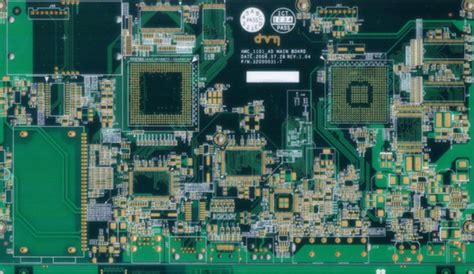Maximizing Efficiency through Custom PCB Assembly Techniques
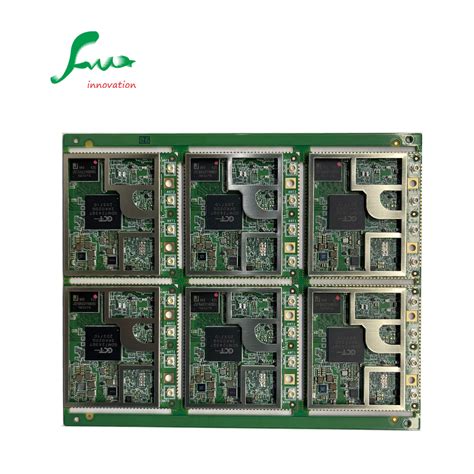
Key Takeaways
In the rapidly evolving world of electronics manufacturing, custom PCB assembly (PCBA) has emerged as a pivotal element for enhancing productivity and efficiency. By leveraging tailored designs and optimized processes, manufacturers can ensure that their projects not only meet stringent specifications but also perform at peak levels. Key benefits of custom PCB assembly include the ability to adapt to specific project requirements and to incorporate advanced technologies such as surface mount devices (SMD) and multi-layer boards, leading to greater design flexibility.
Furthermore, innovative techniques in custom PCB designs allow for more compact layouts while ensuring effective thermal management and signal integrity. As manufacturers focus on streamlining production workflows, integrating advanced software tools and automation can eliminate redundancies, reduce lead times, and ultimately enhance the overall productivity of the assembly process.
Quality control remains paramount in ensuring that each custom PCBA meets required standards before reaching the final stages of production. Implementing robust quality control mechanisms helps in identifying defects early in the process, thereby reducing costs associated with rework or product failure.
As companies navigate this landscape, embracing custom PCB assembly techniques can offer significant advantages, positioning themselves favorably against competitors while meeting rising market demands effectively.
"Investing in innovative PCB strategies today is key to future-proofing your electronics manufacturing."

Introduction to PCB Assembly: Importance in Electronics Manufacturing
In the realm of electronics manufacturing, PCB assembly (or PCBA) plays a pivotal role that cannot be overlooked. It serves as the foundation upon which electronic devices are built, facilitating the integration of various components into a cohesive system. The importance of custom PCB assembly becomes particularly evident as the demand for tailored solutions continues to grow. By employing personalized designs, manufacturers can address unique project requirements, leading to enhanced functionality and performance.
As technological advancements progress at an unprecedented pace, the efficiencies achieved through effective PCBA contribute significantly to reducing production costs and faster time-to-market. A well-executed pcb assembly process not only improves product reliability but also cultivates innovation within a competitive landscape. This intricate process hinges upon intricate planning and precise execution, making it essential for manufacturers to adopt the most advanced techniques and tools available.
Moreover, the ability to adapt designs for specific applications—be it compact size requirements or particular environmental considerations—further highlights why custom PCB assembly is indispensable in achieving higher productivity levels. By optimizing methodologies throughout the production workflow, manufacturers can minimize errors and waste while maximizing resource utilization. As such, embracing innovative strategies in PCB assembly is crucial for companies aiming to excel in today’s dynamic electronics market.
Key Benefits of Custom PCB Assembly for Enhanced Efficiency
Custom PCB assembly offers a multitude of advantages that significantly contribute to improved efficiency within electronics manufacturing. By utilizing tailored designs, businesses can ensure that the PCBA process aligns perfectly with specific project requirements, minimizing waste and reducing the time required for production. One of the primary benefits of engaging in custom PCB assembly is the ability to integrate innovative features that enhance performance while adhering to form factor constraints. This tailored approach allows manufacturers to optimize component placements, leading to shorter signal paths and improved thermal management.
Moreover, optimized production workflows are achievable through custom solutions, which can leverage advanced materials and technologies to streamline processes. By adopting these techniques, companies can achieve higher throughput rates and reduce lead times, resulting in faster delivery of products to market. Additionally, incorporating flexibility into PCB assembly allows organizations to adapt quickly to changing requirements or emerging trends in the industry. As a result, this adaptability not only enhances operational efficiency but also fosters a culture of innovation that is critical in today’s fast-paced technological landscape.
Furthermore, by investing in custom PCBA, companies can often realize cost savings over time through increased productivity and reduced errors during manufacturing. High-quality PCB assemblies that are tailored specifically for intended applications contribute not only to enhanced performance but also promote long-term reliability—further solidifying their position as a crucial element in achieving operational excellence in electronics manufacturing.
Innovative Techniques in Custom PCB Designs
The landscape of PCB assembly has evolved significantly with the adoption of innovative techniques that cater specifically to the diverse needs of electronics manufacturing. One crucial aspect is the integration of advanced design software, which allows engineers to develop custom PCB layouts that optimize space and enhance functionality. These tools facilitate the creation of intricate designs, enabling higher component density while maintaining electrical performance. Furthermore, leveraging 3D printing technology for rapid prototyping can substantially reduce time-to-market, allowing for quicker adaptations based on testing and feedback. Innovations such as surface mount technology (SMT) have also revolutionized traditional processes by permitting smaller components to be mounted directly onto the surface of the board. This results in more compact designs and improved electrical performance for products ranging from consumer electronics to industrial applications. The use of automated assembly processes not only accelerates production but also enhances precision and reliability in the final product. Overall, by harnessing these advanced techniques in PCB assembly, manufacturers can drive efficiency and elevate project performance, ultimately leading to a competitive edge in a rapidly evolving market.
Optimizing Processes: Streamlining Production Workflows
In the realm of PCB assembly, optimizing processes is crucial for enhancing production workflows and achieving higher efficiency. The integration of advanced technologies and methodologies can significantly improve the manufacturing landscape. This begins with a thorough analysis of the current processes in place, identifying bottlenecks, and understanding the flow of materials. By adopting techniques such as Just-In-Time (JIT) inventory management, companies can minimize waste and ensure that components are available when needed, ultimately streamlining PCBA operations. Furthermore, leveraging automation tools can help in reducing manual errors and increasing the speed of assembly lines. Implementing a robust training program for staff to familiarize them with both traditional and advanced techniques cultivates a skilled workforce adept at navigating complex assemblies. Emphasizing cross-functional collaboration between design and production teams drives innovation in custom PCB assembly methods, ensuring that any design modifications can be quickly integrated into manufacturing processes without significant disruptions. This holistic approach to optimizing workflows not only fosters efficiency but also enhances overall project performance, positioning companies for success in a competitive market.
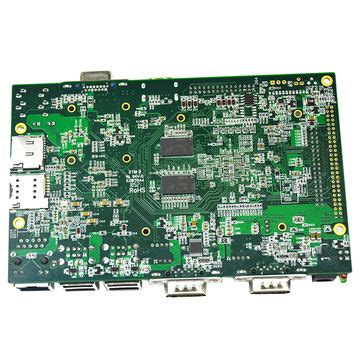
Quality Control Mechanisms in Custom PCB Assembly
Implementing effective quality control mechanisms in custom PCB assembly (PCBA) is paramount to ensuring the reliability and functionality of electronic products. Given the intricate nature of PCB assembly, it is essential to establish comprehensive quality measures at various stages of the manufacturing process. These mechanisms not only minimize defects but also enhance overall efficiency.
One prevalent practice involves the adoption of automated optical inspection (AOI) systems. These systems utilize advanced imaging technology to examine boards for defects such as misalignments or solder issues, thus ensuring that only high-quality products proceed through the assembly stages. In addition, employing in-circuit testing (ICT) can effectively identify faults on assembled boards, allowing for real-time corrections and reducing waste.
Moreover, maintaining a detailed documentation process throughout production is crucial. This entails meticulous record-keeping of every assembly step, enabling teams to track components and assess quality consistently. Utilizing Statistical Process Control (SPC) methodologies can help monitor variation in processes, providing data-driven insights that inform adjustments needed to uphold quality standards.
| Quality Control Mechanism | Description | Benefits |
|---|---|---|
| Automated Optical Inspection | Uses imaging technology for defect detection | Reduces human error, increases speed |
| In-Circuit Testing | Identifies faults on assembled PCBs | Enables real-time corrections |
| Statistical Process Control | Monitors process variations | Enhances consistency and reliability |
Integrating these quality control mechanisms into custom PCBA not only safeguards product integrity but also fosters a culture of meticulousness that resonates throughout the manufacturing process. As businesses strive for excellence in electronics manufacturing, these strategies are key drivers of both productivity and innovation, promising an elevated performance in project outcomes.
Case Studies: Successful Implementation of Custom Techniques
In an era where electronics manufacturing faces increasing competition and complexity, the incorporation of custom PCB assembly (PCBA) techniques has proven to make a significant impact on efficiency and productivity. Various organizations have embraced tailored approaches to their PCB assembly processes, resulting in transformative outcomes. For instance, a well-known automotive tech company revamped its assembly workflow by integrating specialized custom PCB designs, which not only minimized waste but also enhanced the overall performance of their product. This case exemplifies how optimized designs can lead to reduced production times and heightened quality assurance checks—essential elements in achieving timely deliveries and meeting stringent market standards. Furthermore, a prominent medical device manufacturer adopted innovative pcba methods that streamlined their production workflows while ensuring compliance with industry regulations. The shift towards optimized assembly processes allowed them to rapidly prototype and iterate on designs, thereby accelerating product development cycles. These real-world examples underscore the necessity of flexible and efficient custom PCB assembly techniques, highlighting their pivotal role in driving operational success in today’s fast-paced electronics landscape.
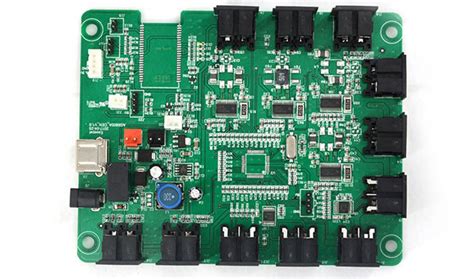
Future Trends in PCB Assembly and Technology Integration
As the landscape of PCB assembly continues to evolve, several future trends are anticipated to significantly influence the industry. One of the most prominent trends is the increase in automation, where machine learning and artificial intelligence are leveraged to streamline PCBA processes. This technology integration not only enhances efficiency but also reduces human error, resulting in higher-quality products. Additionally, the rise of Internet of Things (IoT) devices is shaping how custom PCB assembly designs are developed. Manufacturers are increasingly focusing on creating PCBs that can support smarter technologies with integrated sensors and connectivity features.
Another aspect shaping future trends is the growing emphasis on sustainability. As environmental concerns become more pressing, companies are turning toward eco-friendly materials and processes in their PCB assembly lines. This shift not only meets regulatory requirements but also appeals to a broader customer base that prioritizes sustainability in their purchasing decisions.
Moreover, the demand for more compact and efficient designs is leading to innovations such as multi-layered PCBs and advancements in miniaturization techniques. These developments allow for increased functionality while occupying less space, which is crucial as electronic devices become smaller yet more powerful.
In summary, the integration of advanced technologies with a strong focus on sustainability and compact design will drive significant changes in PCB assembly methodologies, ensuring that manufacturers remain competitive and responsive to market demands. Embracing these trends will be essential for those looking to enhance their productivity and overall efficiency within the electronic manufacturing sector.
Conclusion
In the increasingly competitive landscape of electronics manufacturing, the role of custom PCB assembly (PCBA) cannot be overstated. By focusing on tailored designs and implementing optimized processes, businesses can dramatically improve their production efficiency. The incorporation of innovative techniques in PCB assembly allows manufacturers to address specific project needs while also reducing waste and minimizing lead times. Furthermore, the ongoing emphasis on quality control mechanisms ensures that every assembled board not only meets but exceeds industry standards. As technology continues to advance, integrating future trends in PCB assembly will be pivotal in maintaining a competitive edge. Adapting to these changes will empower companies to not just survive but thrive in a dynamic marketplace. Ultimately, harnessing the full potential of custom PCB assembly techniques is essential for driving productivity and enhancing the performance of projects across various sectors.
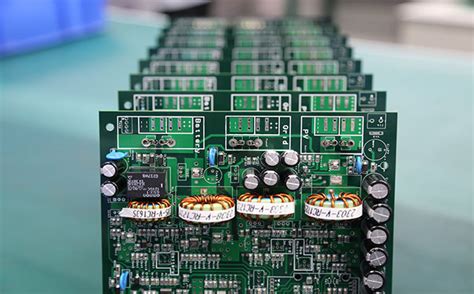
FAQs
What is pcb assembly?
PCB assembly, or pcba, is the process of connecting electronic components to a printed circuit board (PCB). This can involve surface mount technology (SMT) and through-hole technology, enabling the board to function correctly within an electronic device.
Why is custom PCB assembly important?
Custom pcb assembly allows for tailored designs that meet specific project requirements, enhancing both performance and efficiency. By optimizing the layout and component selection, manufacturers can greatly improve the functionality of their electronics.
What are the benefits of using custom PCBA techniques?
Using custom PCBA techniques provides several benefits, including reduced production times, improved reliability, and cost-effectiveness. These tailored approaches enable manufacturers to streamline their workflows while minimizing errors.
How can innovative techniques in custom PCB designs improve efficiency?
Innovative techniques in custom pcb designs, such as advanced routing algorithms and component placement strategies, help maximize space utilization and performance. By adopting new technologies like 3D simulation tools, companies can predict potential issues before production begins.
What quality control mechanisms are utilized in pcb assembly?
Quality control mechanisms in pcb assembly include rigorous testing methods such as Automated Optical Inspection (AOI), X-ray inspection, and functional testing. These processes ensure that each board meets industry standards and performs reliably in real-world applications.







